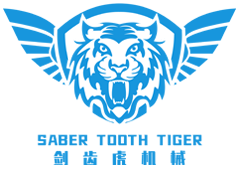-
Understanding the Busbar Cutting, Bending, and Punching Machine: A Comprehensive Guide
When it comes to the manufacturing sector, especially in the field of leather processing machinery, the busbar cutting, bending, and punching machine stands out as an essential tool. These machines are specifically designed to handle busbars—conductive bars used in electrical applications—effectively. Understanding the functionality and benefits of these machines can provide insights into their cr
When it comes to the manufacturing sector, especially in the field of leather processing machinery, the busbar cutting, bending, and punching machine stands out as an essential tool. These machines are specifically designed to handle busbars—conductive bars used in electrical applications—effectively. Understanding the functionality and benefits of these machines can provide insights into their critical role in manufacturing processes.
A busbar cutting, bending, and punching machine automates the fabrication of busbars with precision. The cutting feature allows for the accurate sizing of busbars to meet specific project requirements. This is crucial in ensuring that the busbars fit perfectly into their designated applications, which can range from electrical panels to distribution boards. The machine does not just cut; it can also bend busbars to create angles or curves as required by the design specifications. This bending operation is vital for applications where busbars need to fit around obstacles or within confined spaces.
Punching is another significant feature of these machines. This operation enables the creation of holes or slots in the busbars, which are essential for mounting and electrical connections. The precision of the punching process ensures that the holes are accurately placed, reducing the risk of errors during assembly and installation. This level of precision and automation significantly enhances productivity in manufacturing, saving time and labor costs.
The integration of busbar cutting, bending, and punching machines in the leather processing machinery sector not only streamlines production but also improves the quality of the final products. By utilizing these machines, manufacturers can ensure consistency and reliability in their operations. This consistency is particularly important in industries where electrical safety and performance are paramount, such as in power distribution and industrial applications.
Moreover, adopting advanced machinery like busbar cutting, bending, and punching machines can reflect a company's commitment to innovation and quality. As industries move towards automation, investing in such technology can lead to enhanced operational efficiency and competitiveness in the marketplace.
In conclusion, busbar cutting, bending, and punching machines serve as invaluable assets in the manufacturing and leather processing sectors. They facilitate the efficient production of busbars, promoting accuracy and quality while reducing manual labor and potential errors. Understanding the capabilities of these machines can help manufacturers optimize their processes and remain competitive in a rapidly evolving industry.
A busbar cutting, bending, and punching machine automates the fabrication of busbars with precision. The cutting feature allows for the accurate sizing of busbars to meet specific project requirements. This is crucial in ensuring that the busbars fit perfectly into their designated applications, which can range from electrical panels to distribution boards. The machine does not just cut; it can also bend busbars to create angles or curves as required by the design specifications. This bending operation is vital for applications where busbars need to fit around obstacles or within confined spaces.
Punching is another significant feature of these machines. This operation enables the creation of holes or slots in the busbars, which are essential for mounting and electrical connections. The precision of the punching process ensures that the holes are accurately placed, reducing the risk of errors during assembly and installation. This level of precision and automation significantly enhances productivity in manufacturing, saving time and labor costs.
The integration of busbar cutting, bending, and punching machines in the leather processing machinery sector not only streamlines production but also improves the quality of the final products. By utilizing these machines, manufacturers can ensure consistency and reliability in their operations. This consistency is particularly important in industries where electrical safety and performance are paramount, such as in power distribution and industrial applications.
Moreover, adopting advanced machinery like busbar cutting, bending, and punching machines can reflect a company's commitment to innovation and quality. As industries move towards automation, investing in such technology can lead to enhanced operational efficiency and competitiveness in the marketplace.
In conclusion, busbar cutting, bending, and punching machines serve as invaluable assets in the manufacturing and leather processing sectors. They facilitate the efficient production of busbars, promoting accuracy and quality while reducing manual labor and potential errors. Understanding the capabilities of these machines can help manufacturers optimize their processes and remain competitive in a rapidly evolving industry.
Related news




